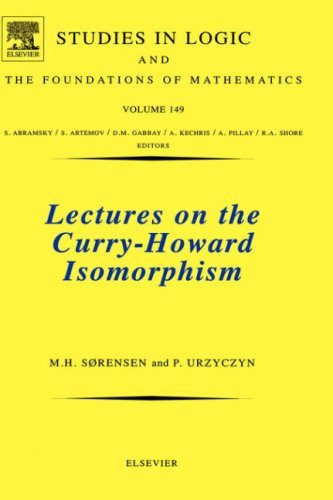
Lectures on the Curry-Howard Isomorphism
by Morten Heine B. Sorensen, Pawel Urzyczyn
Publisher: Elsevier Science 2006
ISBN/ASIN: 0444520775
Number of pages: 273
Description:
The Curry-Howard isomorphism states an amazing correspondence between systems of formal logic as encountered in proof theory and computational calculi as found in type theory. This book give an introduction to parts of proof theory and related aspects of type theory relevant for the Curry-Howard isomorphism. It can serve as an introduction to any or both of typed lambda-calculus and intuitionistic logic.
Download or read it online for free here:
Download link
(1.3MB, PDF)
Similar books
 Reasoned Programming
Reasoned Programmingby Krysia Broda et al - Prentice Hall Trade
The text for advanced undergraduate/graduate students of computer science. It introduces functional, imperative and logic programming and explains how to do it correctly. Functional programming is presented as a programming language in its own right.
(13058 views)
 Formal Syntax and Semantics of Programming Languages
Formal Syntax and Semantics of Programming Languagesby Kenneth Slonneger, Barry L. Kurtz - Addison Wesley Longman
The book presents the typically difficult subject of formal methods in an informal, easy-to-follow manner. Readers with a basic grounding in discreet mathematics will be able to understand the practical applications of these difficult concepts.
(16792 views)
 Structure and Interpretation of Computer Programs
Structure and Interpretation of Computer Programsby Harold Abelson, Gerald Jay Sussman, Julie Sussman - McGraw-Hill
The book teaches how to program by employing the tools of abstraction and modularity. The central philosophy is that programming is the task of breaking large problems into small ones. You will learn how to program and how to think about programming.
(18305 views)
 Semantics With Applications: A Formal Introduction
Semantics With Applications: A Formal Introductionby Hanne Riis Nielson, Flemming Nielson - John Wiley & Sons
The book covers the foundations of structural operational semantics and natural semantics. It shows how to describe the semantics of declarative as well as imperative language constructs and will also touch upon non-sequential constructs.
(13597 views)